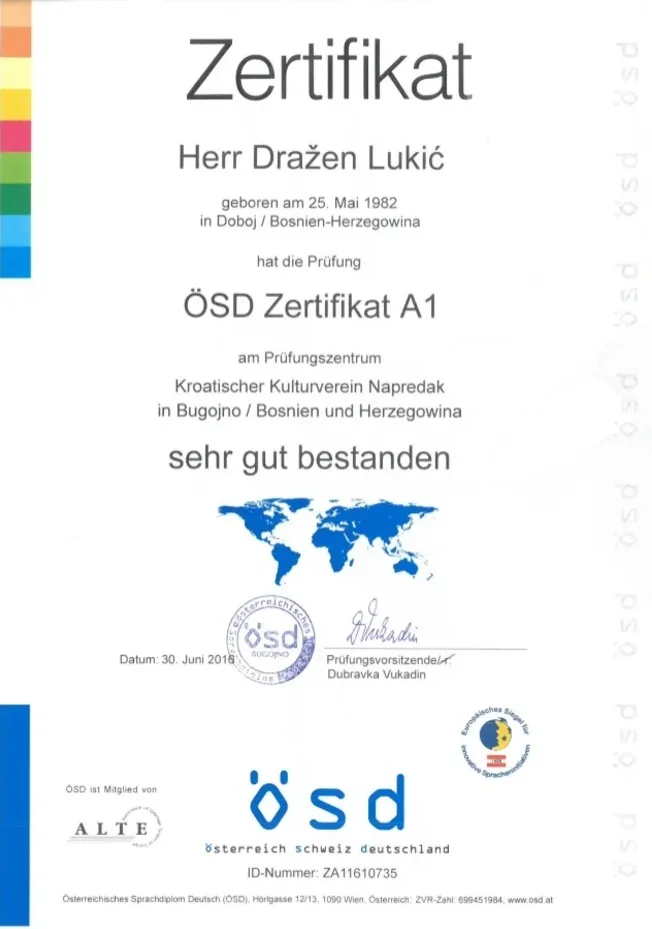Comprehending the German as a Foreign Language Exam
Finding out a brand-new language opens doors to numerous chances, both individual and expert. Amongst the myriad of languages spoken internationally, German stand apart as an essential language, especially in the context of Europe. With over 90 million native speakers and successful economies in Germany, Austria, and Switzerland, efficiency in German can offer significant advantages. For non-native speakers looking to confirm their German language skills, the German as a Foreign Language exam works as a necessary credential.
Summary of the German as a Foreign Language Exam
The German as a Foreign Language exam, commonly described as TestDaF (Test Deutsch als Fremdsprache), is a worldwide acknowledged efficiency test created for non-native speakers. sprachschule österreich assesses people' reading, writing, listening, and speaking capabilities in German. The assessment is an important stepping stone for those seeking to study or operate in German-speaking nations, as it helps in measuring the candidate's ability to utilize German in academic, professional, and everyday contexts.
Who Can Take the Exam?
While anyone can take the TestDaF no matter age, it is mainly targeted at:
Students wanting to get universities in Germany or other German-speaking countries.

Professionals wanting to boost their career prospects in German-speaking regions.
Immigrants looking for citizenship or long-term residency in Germany, Austria, or Switzerland.
Levels of Proficiency
The TestDaF assesses prospects throughout 4 crucial elements which line up with the Common European Framework of Reference for Languages (CEFR). It is segmented into the list below levels:
TDN 3: Intermediate level, appropriate for most university courses.
TDN 4: Upper intermediate level, frequently required for scholastic programs that demand strong language skills.
TDN 5: Advanced level, expected for highly specialized studies or professional operate in German-speaking environments.
Exam Structure
The structure of the TestDaF consists of 4 sub-tests, which collectively take roughly 3.5 hours to complete. Here's what prospects can anticipate:
Listening Comprehension (40 minutes):.
Audio recordings associated with daily scenarios and scholastic situations.
Prospects address questions based on the material.
Checking Out Comprehension (60 minutes):.
Texts from various fields like literature, social sciences, and lives sciences.
Questions assess understanding of the essence and detailed details.
Composed Expression (60 minutes):.
A composing job, frequently involving the analysis of a provided topic or text.
Candidates should show clearness, coherence, and suitable design.
Spoken Expression (30 minutes):.
An interactive speaking test performed with an inspector.
Candidates are evaluated on their ability to engage in discussions, give discussions, and respond to questions.
Getting ready for the TestDaF.
Preparation for the TestDaF is crucial, as it gives prospects the finest possibility to prosper. Here are some methods and resources to consider:.
Study Various Resources.
Language Courses: Enroll in extensive German language courses tailored for TestDaF preparation.
Online Resources: Utilize platforms like Duolingo, Babbel, or Goethe Institute's online offerings.
TestDaF-specific products: Acquire practice tests from the TestDaF official site or language book shops.
Practice Regularly.
Speaking: Engage in conversation clubs or partner with language exchange partners.
Writing: Practice composing essays and letters in German, seeking feedback from native speakers or instructors.
Listening and Reading: Immerse yourself in German media by viewing movies, listening to podcasts, and checking out newspapers.
Mock Exams.
Taking mock tests under timed conditions can assist acquaint prospects with the test structure and improve time management skills. Organizations often provide practice tests to aid students in examining their readiness.
Significance of the Exam.
The significance of the TestDaF extends beyond simple scholastic recognition. Here are numerous reasons taking this exam is beneficial:.
University Admissions: Many German universities need a particular TestDaF rating for admission to programs taught in German.
Profession Opportunities: Proficiency across the 4 language abilities can enhance employability in multinational business or companies in German-speaking areas.
Cultural Engagement: Mastery of the language enables deeper connections with German culture, literature, and history.
Immigration: Proficiency in German might be required for residency permits or long-term residency applications.
FAQs.
What rating do I require to pass the TestDaF?
There is no universal pass mark; it varies by institution. Generally, a rating of TDN 4 is beneficial for university admissions.
How typically can I take the TestDaF?
You can take the TestDaF multiple times. However, it is ideal to permit enough time for enhancement in your language abilities before reattempting the test.
The length of time are the outcomes valid?
TestDaF results are usually legitimate for two years. It is suggested to examine the specific requirements of the institution or organization you are using to.
Where can I take the TestDaF?
The examination is readily available at various screening centers worldwide. The official TestDaF site provides a locator tool for finding nearby testing centers.
Exists a particular age limitation for taking the TestDaF?
There is no age limitation for taking the TestDaF. Whether a teenager or an adult, anybody thinking about proving their German language abilities can register for the exam.
Conclusion.
The German as a Foreign Language exam is an important component for anyone looking to study, work, or immerse themselves in German-speaking societies. With devoted preparation and the ideal resources, prospects can browse the exam effectively and showcase their proficiency in the German language, opening numerous opportunities in education and career paths. Accepting the obstacle of learning German not just leads to academic or professional improvements but also enriches personal point of views through the understanding of a new culture.
